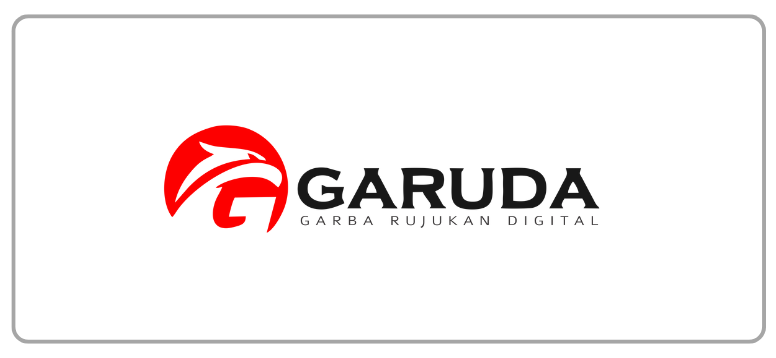Business Model Innovation for Small Medium Enterprises
DOI:
https://doi.org/10.21512/tw.v16i2.1561Keywords:
SME, business model, business model innovation, creative industry, value propositionAbstract
Indonesian economy through Small Medium Enterprises (SMEs) is expected to absorb labor and contribute to the growth of Gross Domestic Product. However, SMEs lack both managerial and technical skills. This research is about business model innovation for SMEs especially in fashion and garment industry. Study used qualitative approach by mentoring four selected SMEs in Babakan Penghulu Village– Cinambo Sub-District, Eastern Bandung. The tools used to analyze them including PEST analysis, Porter’s Five Forces,
Resource Based View, Value Chain Analysis and Business Model Canvas. Finding suggests SMEs to have business model innovation derived from value proposition. SMEs should build their own brand awareness. Moreover, as garment and fashion industry, design can be a particularly important part of the Value Proposition. SMEs could communicate its value propositions and inform their service through its official websites and other social media. Since the intangible resources include brand and design, thus SMEs should build brand image and innovate year by year. SMEs must hire designers and launch a series of new products offers under the signature of their own brands. Ideation to strengthen strategies derives from value proposition building block as a starting point. Moreover, Business Model Canvas makes strategy more focused and measurable. Business model innovation is expected to increase overall performance of SMEs.
References
Amit, R., Zott, C. (2012). Creating Value through Business Model Innovation. [Online] MIT Sloan Management Review, 53(3). Accessed 2 October 2013 from http://search.proquest.com/.
Carvalho, J. M. S, Jonker, J. (2015). Creating a Balanced Value Proposition: Exploring the Advanced Business Creation Model. Journal of Applied Management and Entrepreneurship 20(2), 49-64. Accessed 17 November 2013 from http://search.proquest.com/.
Gordon, J.R.M., Lee P.M. & Lucas H.C.Jr. (2005). A Resource-Based View of Competitive Advantage at the Port of Singapore. Journal of Strategic Information Systems, 14, 69-86.
Henry, A.E. (2011). Understanding Strategic Management (2nd ed). Oxford: Oxford University Press.
Hitt, M. A., Ireland, R.D., & Hoskisson, R.E. (2011). The Management of Strategy: Concepts & Cases (9th ed). South-Western Cengage Learning.
Hossain, M. (2015). A review of literature on open innovation in small and medium-sized enterprises. Journal of Global Entrepreneurship Research 5(1), 1-12. Accessed 16 November 2013 from http://search.proquest.com/.
Howkins, J. (2001). The Creative Economy: How People Make Money from Ideas. The Penguin Press.
Kementerian Pariwisata dan Ekonomi Kreatif RI. (2014). Ekonomi Kreatif: Kekuatan Baru Indonesia Menuju 2025. Jakarta: Kementerian Pariwisata dan Ekonomi Kreatif RI.
Lavie, D. (2006). Capability reconfiguration: An analysis of incumbent responses to technological change, Academy of Management Review, 31, 153–174
Lindgren, P. (2013). Business Model Innovation Leadership: How Do SME's Strategically Lead Business Model Innovation? International Journal of Business and Management, 7(14), 53-66. Accessed 16 November 2013 from http://search.proquest.com/.
Osterwalder, A., Pigneur, Y., & Tucci, C.L. (2005). Clarifying business models: origins, present, and future of the concept. Communications of the Association for Information Systems, 16 (1), 1–38
Osterwalder, A. & Pigneur, Y. (2010). Business Model Generation. New Jersey: John Wiley & Sons, Inc.
Porter, M.E. (1985). Competitive Advantage –Creating and Sustaining Superior Performance. New York: Free Press.
Porter, M.E. (2008). The Five Competitive Forces That Shape Strategy. [Online] Harvard Business Review January 2008. Accessed 9 October 2013 from http://hbr.org/2008/01/the-fivecompetitive-forces-that-shape-strategy/
Tsai, K.H., Wang, J.C. (2008). External technology acquisition and firm performance: A longitudinal study, Journal of Business Venturing, 23, 91–112.
Wheelen, T.L., Hunger, J D. (2010). Strategic Management and Business Policy – Achieving Sustainability (12th ed). New Jersey: Pearson.
Downloads
Published
How to Cite
Issue
Section
License
Authors who publish with this journal agree to the following terms:
a. Authors retain copyright and grant the journal right of first publication with the work simultaneously licensed under a Creative Commons Attribution License - Share Alike that allows others to share the work with an acknowledgment of the work's authorship and initial publication in this journal.
b. Authors are able to enter into separate, additional contractual arrangements for the non-exclusive distribution of the journal's published version of the work (e.g., post it to an institutional repository or publish it in a book), with an acknowledgment of its initial publication in this journal.
c. Authors are permitted and encouraged to post their work online (e.g., in institutional repositories or on their website) prior to and during the submission process, as it can lead to productive exchanges, as well as earlier and greater citation of published work.
USER RIGHTS
All articles published Open Access will be immediately and permanently free for everyone to read and download. We are continuously working with our author communities to select the best choice of license options, currently being defined for this journal as follows: Creative Commons Attribution-Share Alike (CC BY-SA)

















